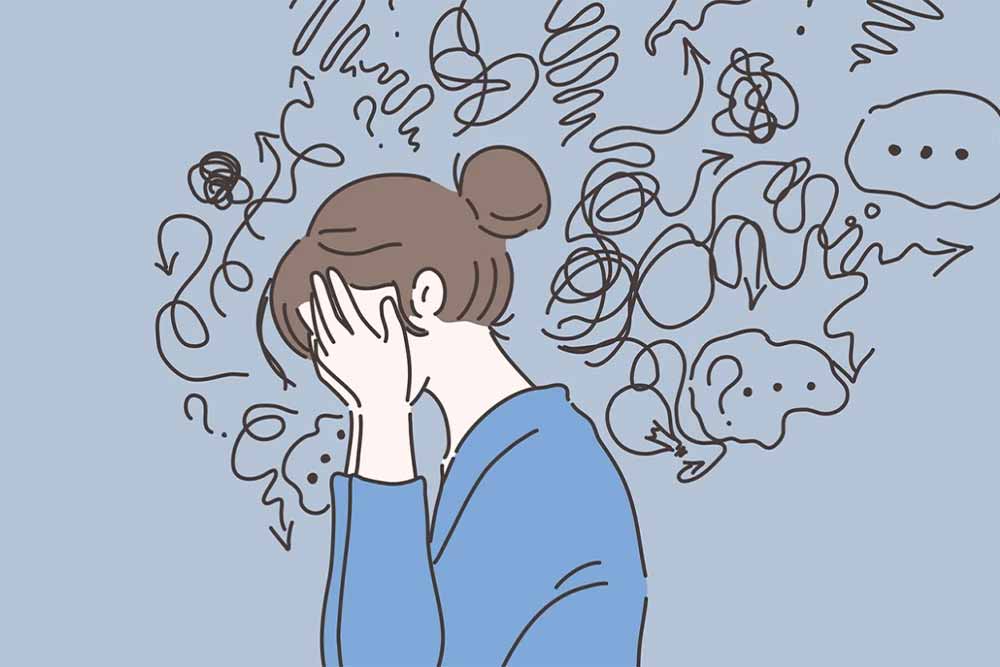Misidentification and stigma rates varied significantly across unacceptable thought presentations of OCD, with harm-based obsessions considered most stigmatizing. Individuals likely view aggression and sexuality as controllable but religiosity as more dispositional. Familiarity with OCD and correctly identifying symptoms helps mitigate stigma.

Coles, A. R. L., Lahey, C. A., Fawcett, E. J., & Fawcett, J. M. (2023). Overcoming the forbidden: Identification and stigma of unacceptable thoughts in obsessive–compulsive disorder. Stigma and Health. Advance online publication. https://doi.org/10.1037/sah0000490
Key Points
- The study examined misidentification rates and stigma associated with different symptoms of obsessive-compulsive disorder (OCD) in a mostly student sample.
- Unacceptable thoughts OCD (UT-OCD) involving sexual, aggressive, or religious obsessions was misidentified at higher rates (59.9%) than contamination OCD (27.1%).
- UT-OCD also elicited more stigma overall compared to contamination OCD according to total scores on the Attribution Questionnaire (AQ).
- Sexual or aggressive obsessions perceived to be directed toward others provoked the highest stigma.
- Correctly identifying OCD, regardless of symptoms, reduced associated stigma compared to misidentifying OCD.
- Results highlight the need for multifaceted depictions of OCD in education and awareness campaigns to improve recognition and understanding of lesser-known symptoms.
Rationale
Prior research has demonstrated that obsessive-compulsive disorder (OCD) involving violent, sexual, or religious obsessions tends to be highly misidentified and misunderstood by the general public (Durna et al., 2019; McCarty et al., 2017).
These symptoms fall under the umbrella of unacceptable thoughts OCD (UT-OCD). However, few studies have closely examined differences in stigma and identification rates across the three main categories of UT-OCD: religious, sexual, and aggressive obsessions.
Exploring nuances across UT-OCD presentations compared to a more recognized form like contamination OCD can elucidate gaps in public knowledge. Perceived threats toward self versus others may also influence stigma, but this has yet to be thoroughly investigated.
As stigma poses barriers to help-seeking and treatment, enhanced understanding of how the public interprets diverse OCD symptoms can pave the way for tailored educational campaigns.
Improving OCD recognition and awareness of the range of ego-dystonic thoughts in OCD is imperative to facilitate faster access to evidence-based care. This can prevent worsening of symptoms and unnecessary hospital admissions due to misdiagnoses.
Method
- Online survey with 412 participants
- 5 vignette conditions depicting an individual with symptoms of OCD:
- 4 unacceptable thought OCD vignettes (sexual-child, sexual-nonchild, aggressive, religious obsessions)
- 1 contamination OCD vignette
- Participants were randomly assigned one vignette and then completed the Diagnostic Questionnaire to assess OCD identification, followed by the Attribution Questionnaire (AQ) to measure stigma.
Sample
- 81.5% students.
- Mean age 22.7 years (range 17-71 years).
- 81% white, 84% female.
- 77 general public recruited through Facebook to supplement mostly student sample.
Statistical measures
Chi-square tests, ANOVAs, and independent samples t-tests.
Results
- UT-OCD vignettes were misidentified at significantly higher rates (59.9%) than contamination OCD (27.1%), supporting Hypothesis 1.
- UT-OCD also received significantly more stigma than contamination OCD, according to total AQ scores.
- The sexual-child vignette elicited the highest rates of misidentification (71.3%) and stigma.
- Sexual/aggressive vignettes were significantly more stigmatized than contamination/religious vignettes, providing support for Hypothesis 2 that perceiving symptoms as involving threats to others increases stigma.
- No significant difference was found between sexual vignettes involving children versus adults, although data trended toward more stigma for child-focused obsessions.
Insight
This research uniquely unpacks differences in stigma across the three categories of unacceptable thought OCD, finding harm-based aggressive and sexual obsessions are met with heightened misidentification and stigma compared to religious obsessions.
People likely view religiosity as more socially acceptable than sexuality or violence, even when ego-dystonic. The study also examined specific factors influencing stigma, like perceived threat and involvement of children.
Strengths
- Inclusion of an open-ended diagnostic question and ranked options to assess identification.
- Use of a multidimensional stigma measure examining various facets like dangerousness and willingness to help.
- Supplemented student sample with the general public for improved generalizability.
Limitations
- Mostly white female student sample limits generalizability.
- Written vignettes may not fully capture real clinical presentations.
- Inability to verify the construct validity of each vignette description means differences could reflect the specific examples.
Implications
Results indicate the need for more versatile and representative depictions of OCD symptoms in medical education and awareness campaigns.
Continued advocacy is essential to communicate the complex range of OCD symptoms to the public and highlight that intrusions do not reflect one’s character or values.
As knowledge evolves, the onus remains on mental health professionals to translate insight into action by challenging assumptions and compassionately guiding individuals to evidence-based care.
Tailored information explaining distinctions between ego-dystonic intrusions in OCD and the risk of acting on thoughts/impulses is required to minimize barriers to help-seeking.
Improved recognition can facilitate faster treatment access and prevent worsening of symptoms.
References
Cathey, A. J., & Wetterneck, C. T. (2013). Stigma and disclosure of intrusive thoughts about sexual themes. Journal of Obsessive-Compulsive and Related Disorders, 2, 439-443. https://doi.org/10.1016/j.jocrd.2013.09.001
Durna, G., Yorulmaz, O., & Aktaç, A. (2019). Public stigma of obsessive compulsive disorder and schizophrenic disorder: Is there really any difference? Psychiatry Research, 271, 559-564. https://doi.org/10.1016/j.psychres.2018.12.065
Glazier, K., Calixte, R. M., Rothschild, R., & Pinto, A. (2013). High rates of OCD symptom misidentification by mental health professionals. Annals of Clinical Psychiatry, 25, 201-209.
McCarty, R. J., Guzick, A. G., Swan, L. K., & McNamara, J. P. H. (2017). Stigma and recognition of different types of symptoms in OCD. Journal of Obsessive-Compulsive and Related Disorders, 12, 64-70. https://doi.org/10.1016/j.jocrd.2016.12.006
Keep Learning
- How might cultural influences affect the identification and stigma surrounding different types of obsessive thoughts?
- What arguments could be made regarding whether certain categories of obsessional thoughts should be more or less stigmatized from a moral standpoint?
- If flawed media depictions perpetuate misconceptions of OCD, what ethical obligations do content creators have in their portrayals of mental illnesses?
- To what extent is stigma a social construction versus an innate reaction to perceived threats?

